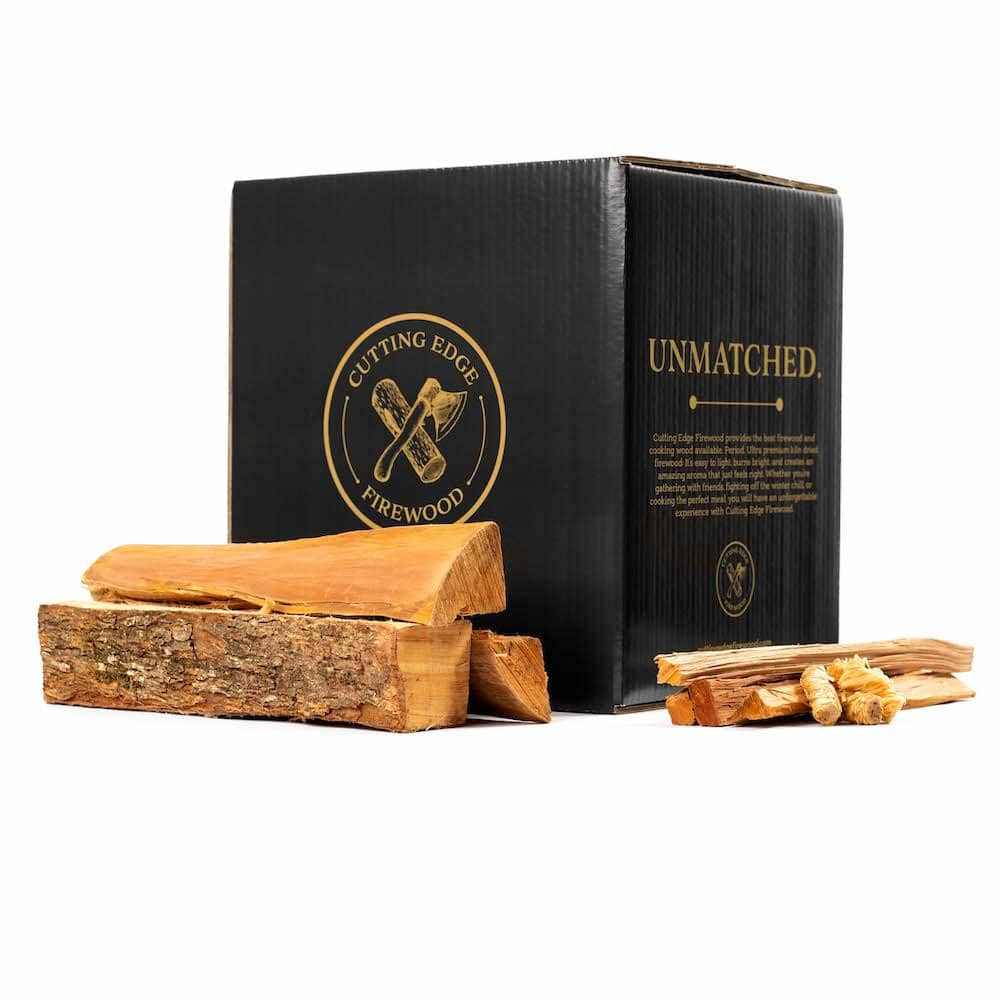1/2 cord of firewood typically costs around $150 to $250. Firewood is sold in different quantities, with the most common being a full cord, which measures 4 feet high, 4 feet wide, and 8 feet long.
Therefore, a half cord of firewood is half the size of a full cord, measuring about 2 feet high, 4 feet wide, and 8 feet long. The price can vary depending on location, quality, and type of wood. In general, hardwood like oak or maple tends to be more expensive than softwood like pine or fir.
It’s important to consider the amount of firewood needed to efficiently heat your space and check with local suppliers for accurate pricing in your area.
The True Cost Of Firewood
When it comes to heating your home during the colder months, firewood can be a cost-effective and efficient solution. But before you head out to buy 1/2 cord of firewood, it’s important to understand the factors that affect its pricing. In this article, we will delve into the true cost of firewood and explore the difference between seasoned and unseasoned firewood.
Factors Affecting Firewood Pricing
Several factors can influence the price of firewood. Understanding these factors can help you make an informed decision and find the best deal for your needs.
| Factor | Description |
|---|---|
| Location | The region you are located in can impact the price of firewood due to transportation costs and availability. |
| Wood Type | Different types of wood have different heat values, burn rates, and availability, which can affect the price. |
| Supply and Demand | If there is a high demand for firewood in your area and a limited supply, prices may be higher. |
| Season | Firewood prices can vary throughout the year. Typically, prices are higher in the colder months when demand is at its peak. |
| Quality | The quality of firewood, including its moisture content and how well it has been seasoned, can impact its price. |
| Delivery Options | If you opt for delivery services, additional fees may be added to the overall price. |
Seasoned Vs. Unseasoned Firewood
One crucial factor to consider when buying firewood is whether it is seasoned or unseasoned. Seasoned firewood refers to wood that has been adequately dried, typically for at least six months. Unseasoned firewood, on the other hand, is freshly cut and contains a higher moisture content.
Seasoned firewood has several advantages over unseasoned firewood. It burns cleaner, produces more heat, and is easier to light. Additionally, seasoned firewood emits fewer pollutants and reduces the risk of creosote buildup in your chimney, reducing the chances of chimney fires.
While the upfront cost of unseasoned firewood may be lower, it is less efficient and requires more effort to burn. It also releases more smoke and can contribute to excessive soot and ash buildup in your fireplace or wood stove.
If you are considering purchasing firewood, it is recommended to invest in seasoned firewood, even though it may be slightly more expensive. The long-term benefits outweigh the initial cost, and you will enjoy a more efficient and cleaner burning experience.

Credit: www.facebook.com
How To Calculate The Amount Of Firewood Needed
Cords are commonly used in the firewood industry to measure the amount of wood needed for heating purposes. A cord refers to a neatly stacked pile of firewood, which measures 4 feet high, 4 feet wide, and 8 feet long. In simpler terms, it is a volume measurement of firewood, where 1 cord is equivalent to 128 cubic feet. This standard cord measurement helps in accurately estimating the amount of firewood needed for your heating requirements.
While purchasing firewood, it’s crucial to have a clear estimate of the amount needed, ensuring you don’t run out during the colder months. To calculate the required amount of firewood, consider the following factors:
- The size of your living space: Determine the square footage of the area you want to heat using firewood. This can be easily done by measuring the length and width of the space and multiplying the two dimensions together. Ensure the measurements are in feet.
- The desired temperature range: Consider the average winter temperature in your region. Warmer regions typically require less firewood, while colder regions will need more to maintain a comfortable indoor temperature.
- The efficiency of your heating equipment: Different heating appliances have varying levels of efficiency. Factor in the efficiency rating of your heating equipment to estimate the firewood consumption accurately.
By using the following formula, you can calculate the approximate amount of firewood needed:
Firewood Needed (cords) = (Square Footage × Desired Temperature Range) / Efficiency Rating
For example, if you have a 1000 square feet living space and desire a temperature range of 65-70°F, with a heating equipment efficiency rating of 80%, the calculation would be:
Firewood Needed (cords) = (1000 × (70-65)) / 80%
By evaluating these factors and applying the formula, you can determine the appropriate amount of firewood required to keep your living space warm and cozy during the winter months. Buying the Right amount of firewood will help you avoid any shortage or wastage, ensuring a comfortable and efficient heating experience.
Comparing Prices And Finding The Best Deal
When it comes to purchasing firewood, comparing prices and finding the best deal is essential. Firewood prices can vary drastically depending on the supplier and location. To ensure you get the most value for your money, it is important to compare prices and consider various factors before making a purchase.
When looking for the best deal on firewood, you have the option to choose between local and online suppliers. Local suppliers often have the advantage of being nearby, allowing for easier pickup or delivery. On the other hand, online suppliers provide convenience and the opportunity to compare prices from multiple sources without leaving the comfort of your home.
When comparing firewood prices, several factors need to be taken into consideration. These factors can affect the overall value and quality of the firewood you receive. It is important to keep the following factors in mind:
1. Wood Type: Different wood types have different burning qualities and heat outputs. Hardwood, such as oak or maple, is typically considered the best option for firewood due to its high energy content and longer burn time.
2. Seasoning: Seasoned firewood has been allowed to dry for an extended period, usually for at least 6 months. Seasoned firewood burns more efficiently, produces less smoke, and generates more heat compared to green or unseasoned firewood.
3. Cord Measurement: Firewood is often sold in cords, which is a measurement unit representing a stack of wood that measures 4 feet high, 4 feet wide, and 8 feet long. However, it is important to note that there are variations in cord sizes, with the most common being full cord, face cord, and half cord.
To make an informed decision and find the best deal for 1/2 cord of firewood, be sure to take these factors into consideration and compare prices from both local and online suppliers. This way, you can ensure you are getting the best value for your money and the highest quality firewood for your needs.

Credit: www.amazon.com
Hidden Costs And Considerations
When purchasing firewood, it’s essential to consider more than just the upfront cost. There are hidden expenses and factors to keep in mind to ensure you’re making an informed decision. This section will explore the hidden costs and considerations associated with buying 1/2 cord of firewood, including delivery and stacking fees, as well as storage and seasoning time.
Delivery And Stacking Fees
Delivery and stacking fees are additional costs that can significantly impact the overall price of 1/2 cord of firewood. Many firewood suppliers charge a fee based on the distance of the delivery location. Some may even have additional fees for difficult-to-access areas or if stairs are involved. It’s crucial to inquire about these fees upfront to avoid any surprises later on.
Moreover, stacking fees can vary from one supplier to another. Some providers include stacking in their delivery cost, while others charge an additional fee for this service. Stacking firewood requires physical labor and time, so it’s understandable that some suppliers charge extra for this convenience. Be sure to clarify whether stacking is included or if you’ll need to pay an additional fee.
Storage And Seasoning Time
Proper storage and seasoning are vital for obtaining high-quality firewood that burns efficiently. Once delivered, firewood needs to be stored in a dry and well-ventilated area. This can include a shed, garage, or woodpile sheltered from rain and snow. Keep in mind that if you don’t already have suitable storage space, you might need to invest in a firewood rack or a cover.
Seasoning time is also an important consideration. Freshly cut firewood contains excess moisture, which affects its ability to burn effectively. To ensure optimal burning conditions, firewood needs to be seasoned for at least six months to one year. During this time, it should be stored properly and allowed to dry out. This may require a separate area specifically designated for seasoning.
Finally, it’s worth noting that seasoning time may vary depending on the type of wood. Hardwoods, such as oak and maple, typically require a longer seasoning period than softwoods like pine. It’s essential to understand the characteristics of the firewood you’re purchasing and plan accordingly for proper storage and seasoning time.
Tips For Maximizing The Value Of Your Firewood
Properly storing and using firewood is essential to ensure you get the most out of your investment. By adopting the right techniques, you can ensure your firewood burns efficiently, provides optimal heat, and lasts longer. In this section, we will discuss two key aspects: proper storage techniques and using firewood efficiently.
Proper Storage Techniques
Storing firewood correctly is vital to preserve its quality and prevent issues such as rot, mold, and insect infestation. Follow these tips to ensure your firewood remains in top condition:
- Choose a suitable location: Store your firewood in a dry, well-ventilated area, protected from rain and snow. Ideally, you should opt for a covered space like a shed or a firewood rack with a tarp or cover to shield it from the elements.
- Elevate the wood: Place your firewood off the ground to maintain airflow and prevent moisture buildup. This will safeguard the wood from rotting and allow it to dry effectively. You can use pallets or specially designed firewood racks for this purpose.
- Avoid stacking directly against walls: Leave a small gap between your firewood stack and the wall to promote air circulation and reduce the risk of moisture accumulation.
- Stack the wood properly: Stack your firewood loosely to promote airflow and drying. Avoid tightly packing the wood together, as it hinders the drying process and increases the chances of mold growth.
- Keep it covered: Use a tarp or firewood cover to protect your stacked wood from moisture and precipitation. Make sure to leave the ends exposed to allow for airflow.
Using Firewood Efficiently
To ensure you use your firewood efficiently and get the most heat and value from each piece, consider the following strategies:
- Use seasoned firewood: Seasoned firewood, which has been dried for at least six months, burns more efficiently and produces less smoke. It contains less moisture, allowing for a hotter, cleaner, and longer-lasting fire.
- Choose the right size: Cut your firewood into suitable lengths that fit your fireplace or wood stove. Well-sized logs will burn more efficiently and evenly, ensuring optimal heat distribution.
- Start small: Begin with smaller pieces or kindling to establish a hot base before adding larger logs. This helps the fire start faster and reduces the risk of smoldering embers.
- Allow for ample air circulation: Properly stack your firewood to allow air to circulate around each piece. This promotes efficient combustion and helps the fire burn steadily.
- Add wood strategically: Gradually add larger logs as the fire builds, maintaining a balanced combination of small kindling and larger pieces. This ensures a consistent burn and maximizes heat output.
By implementing these tips for proper storage techniques and efficient use of firewood, you can make the most of the 1/2 cord of firewood, ensuring optimal heat, longer burning time, and overall value for your investment.

Credit: www.homedepot.com
Frequently Asked Questions Of How Much Is 1 2 Cord Of Firewood
How Much Firewood Is In A Cord?
A cord of firewood is a measurement used to quantify firewood. It is equal to a stack of wood that measures 4 feet high, 4 feet wide, and 8 feet long. In terms of volume, a cord is about 128 cubic feet.
How Much Does A Cord Of Firewood Weigh?
The weight of a cord of firewood can vary depending on the type of wood, its moisture content, and its size. On average, a cord of hardwood weighs between 2,500 and 3,500 pounds, while a cord of softwood weighs between 2,000 and 2,500 pounds.
How Long Does A Cord Of Firewood Last?
The duration a cord of firewood lasts depends on several factors, such as the type of wood, the weather conditions, and the frequency of use. Generally, a well-seasoned cord of firewood can last between one to two winter seasons, providing a warm and cozy fire during those months.
Conclusion
Understanding the cost of 1/2 cord of firewood is crucial for anyone looking to purchase it. Variables such as location and type of wood can affect the price, so it’s important to do research and compare prices from different suppliers.
Ultimately, investing in quality firewood ensures a warm and cozy experience during those cold winter nights. Remember, knowledge is power when it comes to purchasing firewood!
- Streamlined Communication With Drivers: How Trucking Dispatch Software Can Optimize Your Operations - December 6, 2024
- Geofencing for Enhanced Security: How It Can Optimize Trucking Operations - November 21, 2024
- The Power of Mobile Accessibility And Real-Time Tracking for Trucking Operations - November 6, 2024



